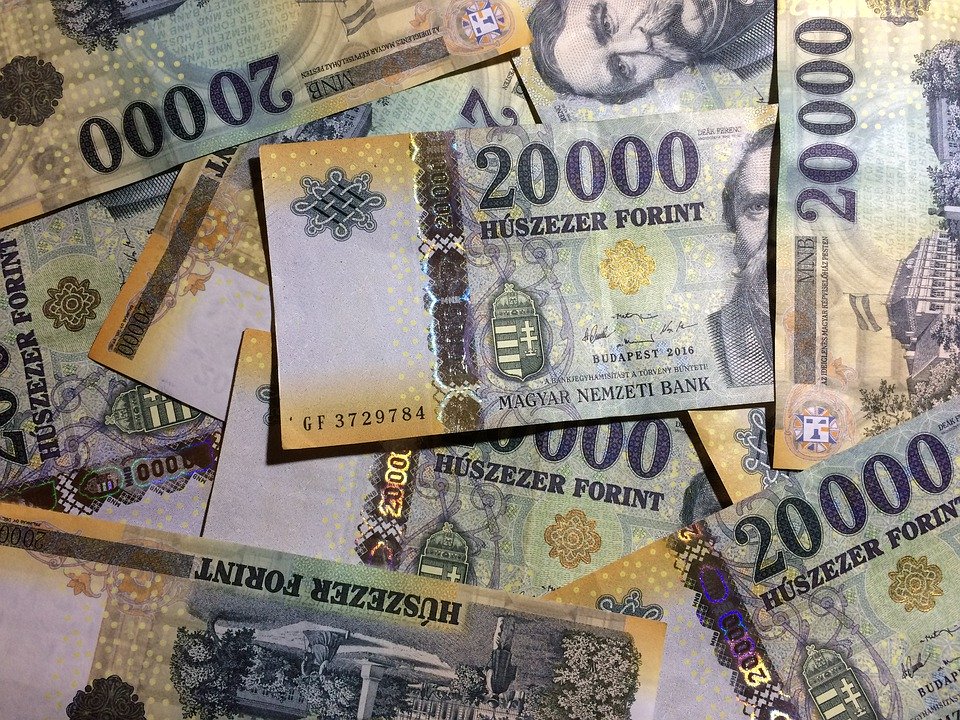The Monetary Council of the Magyar Nemzeti Bank (MNB) reduced the base rate by 75 basis points to 12.25 percent at its interest rate decision meeting on Tuesday, and reduced both ends of the interest rate corridor to the same extent. Accordingly, the lower edge of the interest corridor, the O/N deposit interest rate, will decrease to 11.25 percent, while the upper edge, the O/N loan interest rate, will decrease to 13.25 percent.
The average gross salary was HUF 555,900 in August 2023 in Hungary
The board explained in the justification for the decision that the strong disinflation and the reduction of the country’s vulnerability allow the MNB to continue shaping the monetary conditions by lowering the base rate, but at the same time, due to the increasing external risks, it is justified to maintain a cautious approach and continue the interest rate reduction at a slower pace than before. With the acceleration of disinflation, the domestic real interest rate entered the positive range in September, and then, in addition to the dynamically decreasing inflation, it is expected to rise gradually until the end of the year, they wrote.
They added that the risks surrounding global disinflation and the volatility of international investor sentiment both justify a prudent monetary policy. The council continuously evaluates incoming macroeconomic data, inflation prospects, and the development of the risk environment, and will decide on further modifications to monetary conditions in the coming months.
In the coming months, domestic inflation and core inflation will continue to decrease. The price-suppressing effect of the strict monetary policy, lower raw material prices than last year, restrained consumption and the government’s steps to strengthen market competition is exerting a strong disinflationary effect on an increasingly wide scale. Annual inflation will be in the range of 7-8 percent by the end of the year. The consumer price index is expected to return to the central bank’s tolerance band in 2025. On an annual average, inflation may be between 17.6-18.1 percent this year, 4.0-6.0 percent in 2024, and 2.5-3.5 percent in 2025, they wrote.
They noted that geopolitical tensions have continued to intensify, raising overall risks to the growth outlook and investor sentiment. The prolonged high inflation environment and the continuing Russian-Ukrainian war continue to cause significant uncertainty in the development of international, especially European, economic prospects. The renewed Gaza-Israel conflict at the beginning of October further increases the uncertainty, increasing the generally growing geopolitical tension.
Global trends predict continued disinflation. The weakening of global economic demand, the lower level of raw material prices than last year, and the correction of international transport costs point in the direction of a continued decline in inflation rates. At the same time, a renewed and significant increase in oil and gas prices could stall disinflation, which, in addition to the typically slowly decreasing core inflation indicators, suggests that the return to price stability is expected to be a generally protracted process, the panel concluded.
The Monetary Council explained that the subdued economic performance in 2023 is primarily due to high inflation and declining state investments. Due to price increases, real wages falling in the first eight months of the year, as well as cautious consumer and investor decisions, result in a reduction in internal demand. At the same time, this year’s economic performance is significantly improved by the corrective agricultural growth after last year’s drought, and the real wage index, which has been increasing since September, also plays a role in the slow recovery at the end of the year. Domestic exports may rise again this year, while imports will decrease due to the decline in internal demand items and lower energy prices. In 2023, the growth contribution of net exports may remain positive. The moderation of inflation and the recovery of internal demand items will support the expansion of GDP in 2024 and 2025. The export market share is expected to increase further with the ramp-up of production of the new export capacities being built. According to their forecast, the performance of the domestic economy in 2023 is expected to be in the range of (-0.5) to 0.5 percent. Domestic GDP is expected to grow by 3.0-4.0 percent in both 2024 and 2025.
They also mentioned that the broad, general decline in domestic inflation continued in September. Consumer prices rose by 12.2 percent year-on-year, while core inflation stood at 13.1 percent. The consumer price index was significantly, 4.2 percentage points lower than the August value, mainly due to the declining price dynamics of regulated price products and services and processed food, while fuel inflation rose. The decrease in core inflation occurred in a wide range of products and services, so the indicator decreased by 2.1 percentage points compared to the previous month. The annualized 3-month change in core inflation, an indicator that better captures the underlying processes in the current situation, last fell below the 4 percent level experienced before the Covid period. The monthly revaluations in inflation and core inflation corresponded to the historical average for September.
(MTI)


















